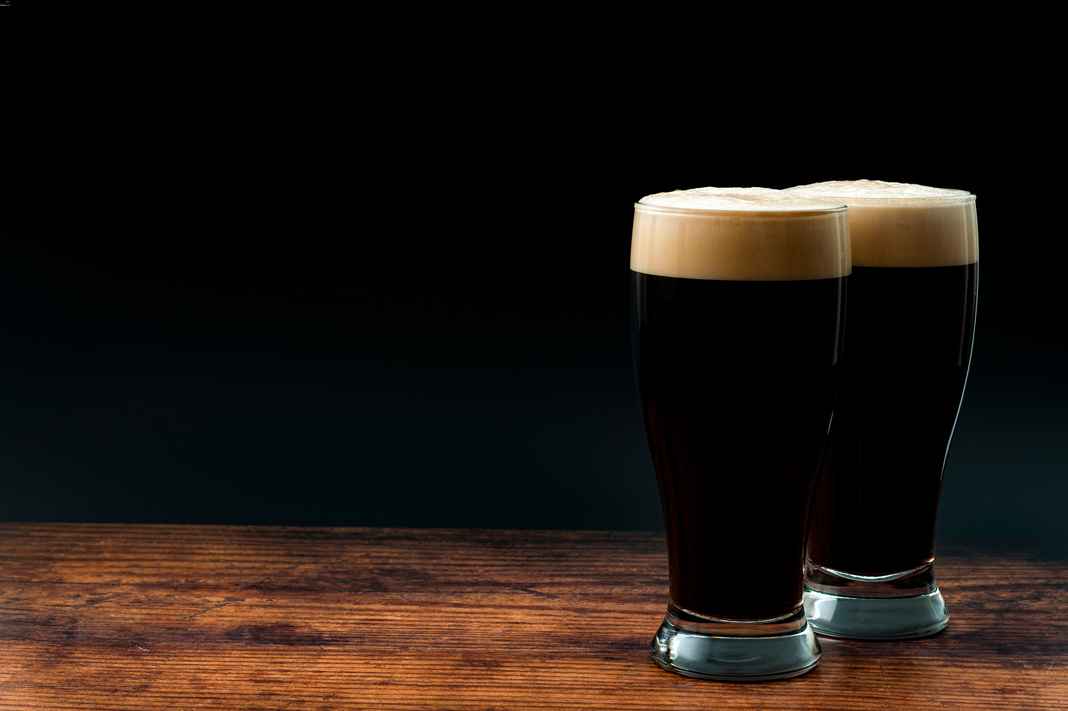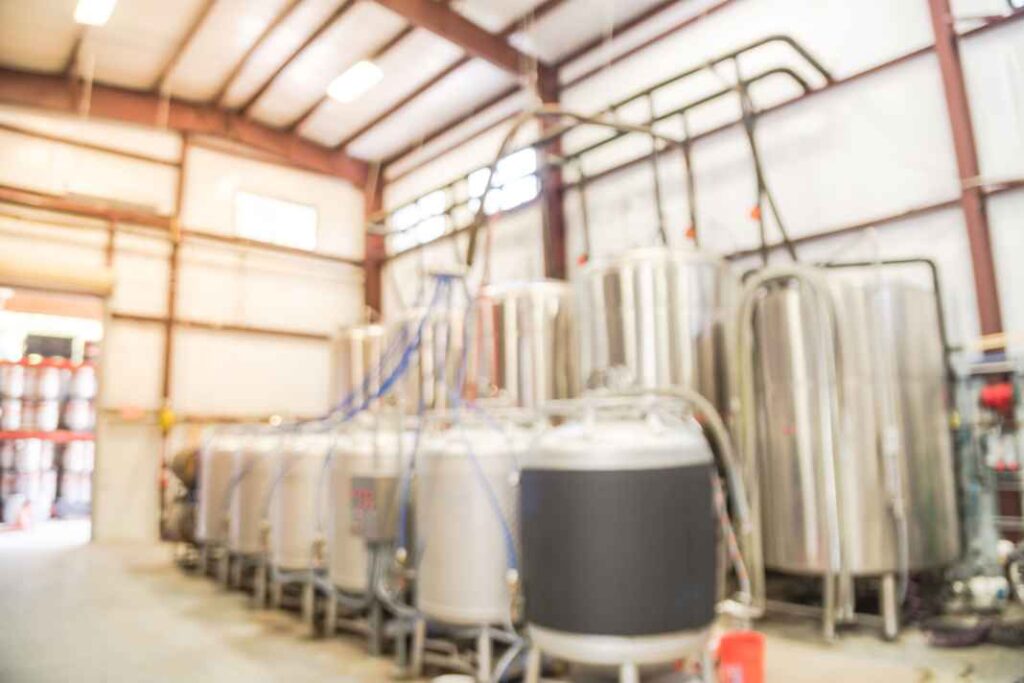In the waning months of 2019, Colorado beer fans reveled in the spoils of one of the strongest, most robust, and most diverse craft beer scenes in the country. In the year before COVID-19, Colorado recorded 400 craft breweries in operation, the most in state history, ranking only second to California in state brewery totals.
But by March 2020, Colorado taprooms—like most around the country—were tasked with having to completely reimagine operations, blow up business plans, and employ unorthodox means in order to survive.
According to a report from the Beer Institute, Brewers Association, National Beer Wholesalers Association, and American Beverage Licensees, the craft beer industry is expected to lose more than 651,000 jobs nationally as a result of COVID-19. And while not all closures were a direct result of the pandemic, Colorado saw 32 breweries cease operations in 2020, a significant increase from previous years, with 22 closures in 2019, 19 closures in 2018, 16 closures in 2017, and only nine in 2016.
Pivoting in the Face of the Unknown
As the virus erupted into a full-blown pandemic last March, local government officials issued a wide range of sometimes contradictory orders, including a temporary nonessential designation that effectively closed breweries altogether. (The order was recanted just three hours later to allow breweries to deliver and sell beer to go.) Subsequent restrictions only allowed breweries to host customers on site if they also served food, either in house or through a neighboring restaurant partner. And more recently, breweries, like restaurants, have largely been relegated to outdoor service.
Denver’s Woods Boss Brewing Company, like many around the state, got creative. “We blew up the taproom and reorganized to provide safe CDC-recommended spacing and cleaning protocols,” says co-founder Jordan Fink. “We switched to table service, added additional shifts to be able to have a host, as well as additional servers, learned how to deal with customers who don’t like the rules with a smile, offered lots of different deals, specials, etc., hosted virtual tasting events and festivals, and more.” In order to increase capacity while also complying with safety precautions, Fink worked with the city to expand Woods Boss’ outdoor seating area by shutting down the closest lane of street traffic and installing a concrete barrier for additional seating.
Meanwhile, others in the beer industry weighed whether to reopen altogether. For Sarah Haughey, co-founder of the Jailhouse craft beer bar in Buena Vista, general concern for the safety of everyone in her community led to the decision to push pause on operations. “The safety of our staff, our community, and ourselves was the biggest factor that went into the decision to temporarily close,” says Haughey, explaining that after seeing the reality of the virus’ toll on the East Coast, she and her husband/business partner didn’t want to be a source of spread in the community.
Even as government restrictions lessened over the summer to allow patio service, Haughey says there were a multitude of other reasons that reinforced the couple’s decision to prolong the Jailhouse’s closure. “We tried super hard to justify just doing patio service this summer, but every way we looked at it, we hit so many barriers,” she says. “We thought of reservations, but had trouble wrapping our head around limiting people’s time at the establishment. With social distancing requirements, we could maybe allow 20 people at once, which would not cover our expenses included in full operations. Unfortunately, many tourists were also against wearing masks and we heard plenty of horror stories from hospitality staff in our town,” Haughey continues. “At the end of the day, all the cons outweighed the pros of reopening.”
Still, many breweries reopened, and while remaining compliant with on-site consumption was the first step, adapting to the new landscape created by COVID was the next big hurdle. Like Woods Boss, many of the state’s small and independent brewers were wholly dependent on draft sales prior to the pandemic (when it comes to bottling or canning beer to be sold at local retailers, margins become significantly tighter). However, when on-premise sales were no longer a reliable option, many breweries, like Ratio Beerworks, had to make difficult decisions about whether to invest in an entirely new side of the industry.

Reimagining Packaging
Without a canning line in place, Ratio initially turned to 32-ounce canned crowlers as a stopgap to help fuel sales. However, with breweries across the country all switching business models simultaneously, the country soon experienced an aluminum shortage. Ratio was lucky: It was able to lean on the support of an older, more well-established ally in the industry.
“We reached out to our friends at New Belgium, who were sitting on some old stock that they were able to share with us,” says Jason zumBrunnen, co-founder and head brewer at Ratio Beerworks. As zumBrunnen explains, that spirit of collaboration not only helped sustain business when Ratio would have otherwise struggled even more mightily, it also inspired the brewery to pay it forward when the opportunity arrived.
“This partnership stemmed from working with New Belgium several years ago on a fun collaboration called Let’s Get Incredible, which was a brûléed grapefruit saison,” says zumBrunnen. “We also were able to return the favor to some other breweries when we received our actual shipment [of crowlers], and were then able to offer some of our inventory as well.”
The pandemic, it turns out, forced Ratio’s hand. “We had planned on going into cans eventually with hopes of building out a full production facility, but COVID sped up our plans by a year,” zumBrunnen acknowledges. Despite the expedited timeline, Ratio’s unintended preplanning around the logistics of canning beer helped ease its transition when it came time to pivot.
The increased demand for aluminum cans didn’t just impact small up-and-coming breweries. Larger, regional pioneers like Odell Brewing Co. and Oskar Blues Brewery both saw increased off-premise sales, but not before implementing new packaging strategies as aluminum can supplies became scarce.
Odell CEO Eric Smith explained how the brewery was reduced to only a handful of brands as can supplies began dwindling: “It made us look internally about the amount of inventory we carried,” says Smith. “[Pre-pandemic] we were getting to the point where we were limiting our inventory as low as we could to keep everything as fresh as possible, but that kind of backfired on us when COVID hit. We ended up having to prioritize [SKUs] for three to four weeks, limiting what we sent to [distributors] down to four brands.” With new shipments of preprinted cans experiencing significant delays, the Odell team went retro by utilizing glass bottles to package a few smaller-volume releases that would have otherwise been canned.
Similarly, Oskar Blues, the craft beer industry’s earliest adopter of canning, found a way to upcycle cans with outdated branding. “Following a brand refresh in January 2020, all of our cans received fresh artwork,” says Aaron Baker, the brewery’s senior marketing manager. “We saw an opportunity to utilize never-used, empty cans with outdated artwork by wrapping them with new artwork. These cans were previously set to be recycled, but instead could be upcycled to their original purpose—to carry fresh beer to beer drinkers,” he continues. “As a result, we never missed a shipment and kept the fresh beer flowing.”

Opening in a Pandemic
Fighting to remain open during a pandemic has been taxing, but attempting to launch a new brewery in the midst of COVID is arguably an exercise in madness. In addition to navigating all the traditional unknowns that come with opening a small business, 26 Colorado breweries had the unenviable task of launching in the last year; 18 of those were helmed by first-time brewery owners.
One of the biggest challenges for the team at Peculier Ales, which opened in August 2020 in Windsor, was trying to budget for the fluid nature of ever-changing seating capacities. “We are operating with three sets of projections for our beginning budget based upon the differing levels of ‘open,’” says founder Nick Armitage. “The state restrictions dealing with the differing capacity levels have offered a fair amount of challenges; we are currently spending about $400 a week in propane refills, purchasing tents and additional heaters (all for our outdoor-only seating), and having to be on our toes with the daily, weekly, and monthly changes on what is allowed.”
Leif Anderson and Ryan Close, co-founders of Mash Mechanix Brewing Co. in Colorado Springs, experienced setbacks in permitting, which delayed their initial projected opening date in May 2020. But now, even though the brewery is ready to launch fully, the two have decided to wait just a bit longer in order to support their brewing community peers. “We’ve received so much support from the brewery community over the last year and felt like we wanted to help however we could,” explains Close. “During the first shutdown, there was financial aid from the various government levels to help [breweries] get through it. That support isn’t there this time around. With consumer support lagging, combined with heading into the coldest months of the year, we felt the juice of opening as of now isn’t worth the squeeze, nor did we want to be a detractor to the breweries that are already open in this environment.”
Closing in a Pandemic
Not all breweries have been as fortunate. Periodic Brewing, which was founded in 2015 in Leadville, added a second location in the Denver suburb of Northglenn in 2018. By the second half of 2019, distribution was up 200 percent, and sales were up 30 percent at the Northglenn location and up 20 percent in Leadville. However, from the onset of the pandemic to August, the bottoming out of sales and distributions resulted in a loss of more than $350,000 in revenue.
Co-founder Chris Labbe recalls working 50-hour weeks—that was on top of his day job—to keep Periodic going. And yet, despite successfully navigating a cumbersome federal loan process and working with a venture capital firm to secure additional funding, he decided the magic was gone and closed both locations. “I woke up and realized I just didn’t want to do this anymore,” Labbe says. “Being in business with this [venture capital] team and planning for the next shutdown or slowdown, working 14-hour days, dealing with angry debtors and landlords…it just didn’t make sense anymore. Maybe the worst was that I didn’t want to be in the taproom dealing with customers unwilling to follow the mandates.”

Pulling Each Other Up By the Bootstraps
The craft beer industry is still one built around the idea of community and collaboration. And when one Denver brewery found itself facing an unexpected crisis in the midst of an already difficult year, industry cohorts and fans of the neighborhood spot banded together to lend a hand.
Call to Arms Brewing Company had just started hitting its stride after nearly collapsing at the beginning of the pandemic. Another primarily draft brewery, with almost all sales stemming from the taproom, Call to Arms had already weathered the recent departure of two of its three co-founders. And like others, it quickly dove into mobile canning, outfitted an extended patio space, and began seeing revenue numbers improve enough to the point it looked like it could survive the winter. Then, at the beginning of December, the brewery’s chiller broke, causing operations to come to a screeching halt. “You do your best to prepare for the worst, while allocating money and resources towards growth and sustainability,” says founder Chris Bell. “But there is no amount of planning you can do for a pandemic. So, when a $16,000 piece of equipment that controls how all of your product is made and maintained has a catastrophic breakdown during a pandemic, you can’t help feeling distraught.”
Over the years, Call to Arms has been no stranger to employing gimmicks to promote its brews. (To wit: Its Khores Ballroom Beer parodies Coors Brewing’s iconic Banquet Beer, while other offerings are named after comedy movies.) Bell explained his team handled the crisis in its normal way: in the most unorthodox manner possible.
“My sister finally convinced me that I should just ask for some help. She said, ‘You’re not asking for a handout, you’re asking people to help support a business they love and want to see succeed.’” The brewery launched a Kickstarter campaign with the initial goal of covering 20 percent of the repair cost. Within two days, the community rallied to foot the entire bill and Call to Arms was able to get its chiller back up and running.
Finding Growth During Uncertainty
COVID’s impact on craft beer over the past year has been complicated, tumultuous, at times devastating, and always inconsistent. Breweries that had previously established strong distribution networks for off-premise sales have found success with increased to-go purchasing.
Denver’s Novel Strand Brewing Company, which is just shy of three years old, was one of those breweries that saw initial growth during the pandemic by selling cans to go. Co-founder Tamir Danon attributes that success to a combination of still basking in the shine of being a newer brewery, a focus on popular hoppy styles, constant recipe improvement, and customer association with canned beers. “I think the fact that we’ve been putting out can releases since early on led to people already knowing that they could come here for some tasty to-go options,” Danon says. “We were able to stay ahead of last year’s revenue. It isn’t fantastic, but growth during a pandemic is growth.”
Still, as winter continues and uncertainty mounts around the possibility of a steep drop-off in on-site sales, as well as the question of whether to-go sales can sustain a brewery, owners like Danon have become resigned to just rolling with the punches. “I stopped anticipating when the pandemic started,” he says. “You just adapt and survive. I think that this is definitely a time to just stay focused.”
The craft beer industry was founded on the promise of collaboration and innovation. Even during the challenges of the past year, many breweries believe that clinging to these core principles will help them adapt in the face of seemingly insurmountable adversity. “At the end of the day, all we can do is plan the best we can, react quickly and competently to whatever new curveball is thrown our way,” says Fink of Woods Boss. “We just have to keep staying positive, have fun, keep working our butts off making fantastic beer, and make it all work so that we are still here on the other side.”
Talk to us! Email your experiences (and thoughts, opinions, and questions—anything, really) to askus@diningout.com.

